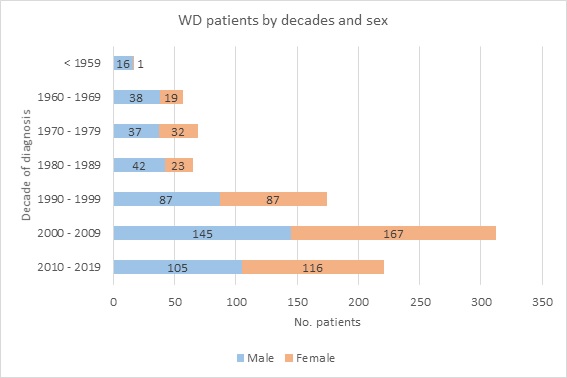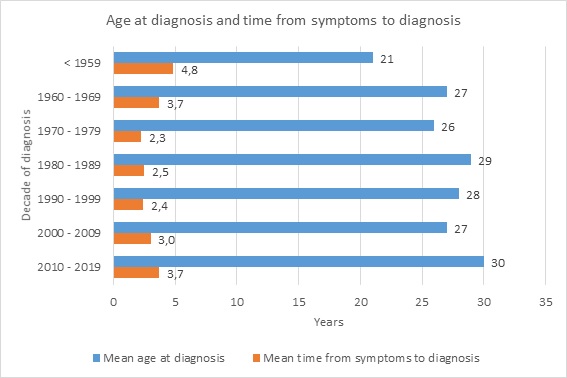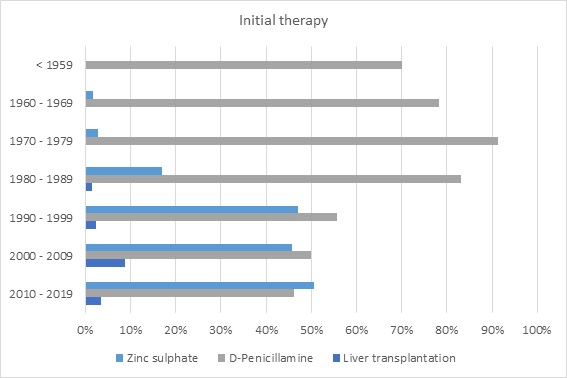Category: Rare Genetic and Metabolic Diseases
Objective: We present seven decades of experience of a single reference centre covering most adult Wilson disease (WD) patients in Poland.
Background: WD is a rare genetic disorder causing copper accumulation and subsequent liver and brain damage. Consequently, two symptomatic forms, neurological and hepatic, are recognized; additionally, presymptomatic cases are diagnosed upon family screening. Since the end of 1950s, life-long anti-copper therapies (mainly d-penicillamine – DP, trientine, zinc salts) have been available.
Method: Electronic prospective data collection was started in the middle of the 1990s; WD patients diagnosed before were recorded retrospectively from medical records. Demographic, clinical characteristics, diagnostic methods, treatment were followed and analyzed over time decades. Kaplan Maier curves were used for a time to event analysis.
Results: Up to 2019, 915 patients from all over Poland were recorded; the number of WD patients increased over the decades from 20 to 237 before 1960 and in the 2010s, respectively. No substantial differences were noted for the mean age of diagnosis (~30 yrs), time from first signs to diagnosis (~35 month) and sex. Over the time, hepatic WD patients rate increased substantially; initially majority of WD patients presented with neurological signs, while last decades, half of patients reported predominantly hepatic symptoms. The diagnosis was mostly based on ceruloplasmin in serum and copper in urine and Kayser-Fleischer ring; in the last two decades, DNA analysis and brain MR imaging at diagnosis were used to support diagnosis. Advances in screening resulted in more presymptomatic WD patients identified in the last decades. WD patients were treated mainly with DP before 1970. Since then, zinc was introduced gradually and currently both medicines are used as initial therapy just as often. Switch between DP and zinc was recorded for up to 6-7% WD patients. Treatment compliance is reduced within the first months of therapy, and generally, every third patient, especially those missing follow-up visits, reported irregular drug use. Survival and both survival and independence over decades improved since the 1970s, most likely due to access to effective monitoring and treatment.
Conclusion: WD patients prognosis in Poland improved over the decades. Reference center based, timely, and high quality of care is needed to better WD patients’ health outcomes.
To cite this abstract in AMA style:
A. Członkowska, T. Litwin, ł. Kraiński, M. Skowrońska, A. Piechal, A. Antos, M. Niewada. Long term follow-up of Wilson disease patients in Poland. Report from the national reference centre. [abstract]. Mov Disord. 2021; 36 (suppl 1). https://www.mdsabstracts.org/abstract/long-term-follow-up-of-wilson-disease-patients-in-poland-report-from-the-national-reference-centre/. Accessed October 17, 2025.« Back to MDS Virtual Congress 2021
MDS Abstracts - https://www.mdsabstracts.org/abstract/long-term-follow-up-of-wilson-disease-patients-in-poland-report-from-the-national-reference-centre/



